Are you thinking about getting dental implants? You may be wondering how dentists put those tiny titanium posts in just the right spot in your jawbone. The key to doing this accurately is sometimes a tiny little thing named a surgical guide. This specialized tool assists your dentist in placing the implants precisely. Implant surgical guides have revolutionized implant dentistry, and the procedure has become safer, quicker, and more predictable for you.
Here, you will find out what surgical guides are, how they are created, and why they are so vital for successful dental implant treatment.
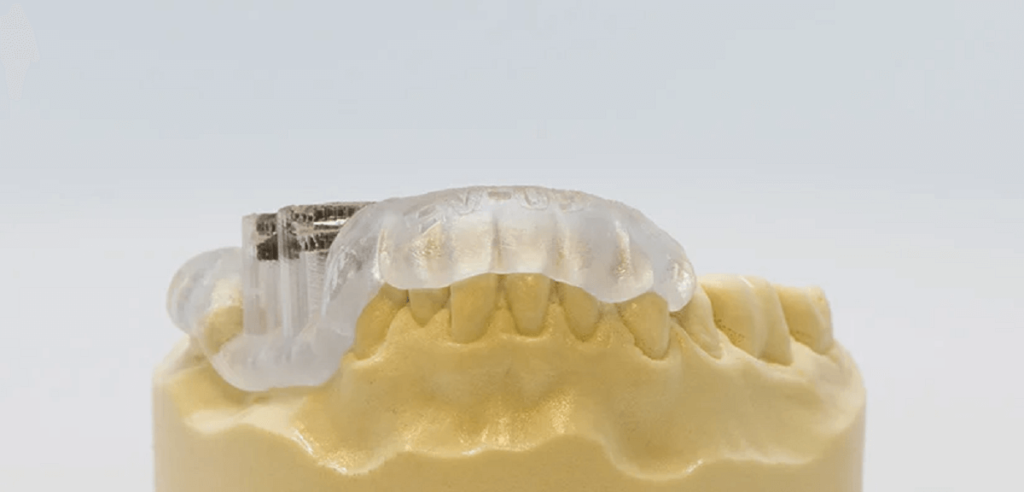
What is a Surgical Guide?
A surgical guide for dental implants is a custom-made template that helps your dentist place dental implants with precision. Think of it as a roadmap for your implant surgery. The guide has small holes or sleeves that direct the dental drill to the exact location, angle, and depth needed for your implant.
Your surgical guide is designed from precise scans of your mouth and precise planning of your implant treatment. Your bone structure, surrounding nerves, sinuses, and final position of your replacement teeth are all considered during this planning. With a surgical guide, your dentist can position implants more precisely than with freehand methods.
Materials Used
Surgical guides are produced using various materials, each having certain benefits:
Acrylic
Acrylic surgical guides are strong and rigid, therefore reliable when used in surgery. They have several advantages:
- Stable and strong when used for drilling
- Sterilizable for safe employment
- Relatively inexpensive compared to alternatives
Resin
Resin surgical guides are very accurate and can be created with very detailed craftsmanship. Aidite’s high-quality dental resins are specially designed for surgical guides with excellent dimensional stability. These biocompatible resins are resistant to changes during sterilization procedures and offer the right combination of rigidity and minimal flexibility necessary during implant surgery.
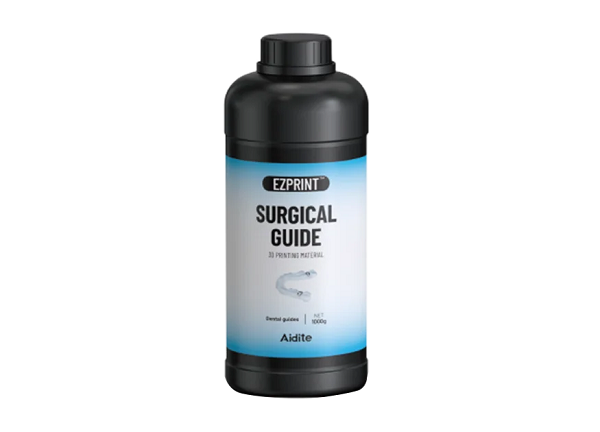
3D Printable Materials
Current surgical guides are usually 3D printed with specialized dental materials:
- Can be generated rapidly, typically in-house
- Extremely flexible to customize to each patient
- Extremely precise and detailed
- Economical for dental offices
Types of Surgical Guide
Surgical guides are categorized by what holds them in your mouth:
Tooth-supported
Tooth-supported guides sit on your current teeth. They’re the most popular kind and have lots of benefits:
- Highly stable placement
- Simple to place into position
- Very good for patients with some natural teeth
- Typically very precise
Your dentist will probably recommend this kind if you have sufficient healthy teeth to hold the guide.
Bone-supported
Bone-supported surgical implant guides sit on your jawbone. These are employed in situations where:
- Few or no remaining teeth
- Large sections of your jaw must have implants
- Your bone must be given direct access by your dentist
This process involves a short surgical procedure that exposes your jawbone prior to inserting the guide.
Tissue-supported
Tissue-supported guides lie upon your gum tissue. They are usually used if:
- No teeth remain
- Your dentist does not need to expose your bone
- A less invasive method will be best
These guides may be a bit less precise than the others because gum tissue is soft, but they’re still extremely effective for most cases.
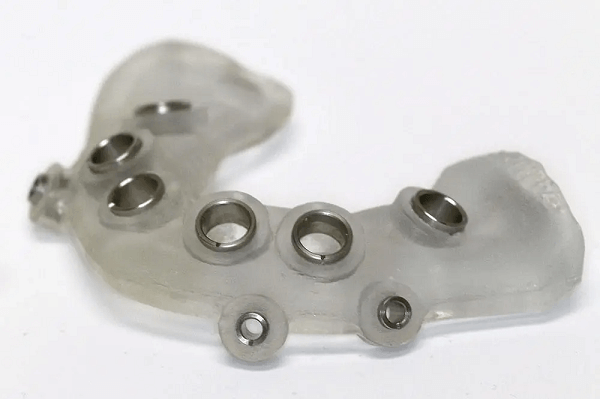
Clinical Applications of Surgical Guide
Surgical guides for dental implants have made many dental procedures much easier:
1. Single Tooth Implants: Guides make sure your implant fits perfectly with adjacent teeth.
2. Multiple Implant Placement: For multiple missing teeth, guides space implants evenly and in the best position.
3. Full-Arch Reconstruction: When all teeth in your upper or lower jaw are being replaced, guides are essential for accurate implant placement.
4. Immediate Loading: Temporary teeth can be placed on some patients the same day as implants, which demands very precise placement that guides offer.
5. Complex Cases: Patients with limited bone or anatomical complexities benefit highly by the accuracy of guided surgery.
Surgical guides are indispensable assets in modern implant dentistry, rendering treatment safer and more predictable for virtually all implant cases.
Benefits of Using a Surgical Guide
Having a surgical guide for your implant procedure benefits you in many ways:
- Increased Precision: Implants are positioned precisely where planned, with accuracy hard to obtain freehand.
- Shorter Surgery: Your time in the chair is generally shorter because the planning has already been accomplished prior to your arrival.
- Less Invasive: Most guided implant procedures involve smaller cuts or no cuts.
- Better Results: Well-placed implants work better and look better.
- Reduced Risk: The risk of damaging nerves, sinuses, or other important structures is reduced.
- Predictable Outcomes: Your dentist has a better idea of the final outcome, so there are fewer surprises.
- More Confidence: You and your dentist can both feel more confident about the procedure.
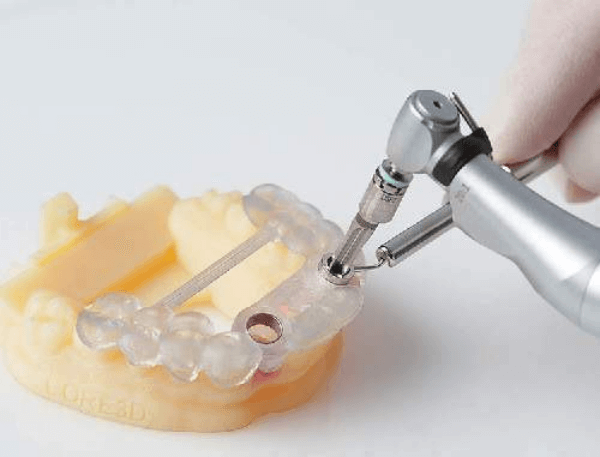
Steps of Surgical Guide Workflow
Creating and applying a surgical guide requires a few fundamental steps:
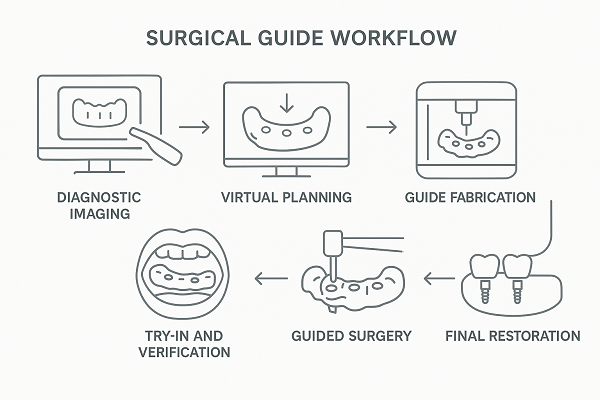
1. Diagnostic Imaging: Your dentist scans your jaws (3D, CBCT) and takes digital impressions of your teeth.
2. Virtual Planning: Based on special software, your dentist makes a plan of the precise location, direction, and depth of every implant.
3. Guide Design: From the virtual plan, a patient-specific surgical guide is created digitally.
4. Guide Fabrication: The guide is fabricated via 3D printing or milling technology. Aidite’s precision milling systems have the capability of creating surgical guides with high accuracy, resulting in perfect fit and sleeve positioning.
5. Try-in and Verification: Your dentist verifies the proper fit of the guide in your mouth prior to surgery.
6. Guided Surgery: Throughout your surgery, the guide guides the dental drills and implant placement as per the plan.
7. Final Restoration: Once healed, your new teeth are fixed to the accurately positioned implants.
This digital workflow ensures your implant treatment goes as planned from beginning to end.
FAQs About Surgical Guide
What is a surgical guide?
A surgical guide is a special temporary template that assists dentists in placing dental implants at the precisely planned position. It functions as a stencil, directing the dental drill to the appropriate location, angle, and depth for every implant following meticulous pre-planning.
What is a surgical guide for dental implants?
A surgical guide for dental implants is a custom-made appliance that sits over your gums or existing teeth. It has finely positioned holes or metal sleeves where the implant drills and implant placement are guided through, following the treatment plan to the letter.
How to make a surgical guide for dental implants?
Creating a surgical guide is a multi-step process: 3D scanning of your mouth, implant position planning with dedicated software, digital design of the guide, and finally making it using 3D printing or milling technology.
What are the benefits of a surgical guide?
Surgical guides provide numerous advantages such as increased accuracy, reduced surgery time, minimally invasive procedures, decreased likelihood of complications, more predictable outcomes, and improved results.
Conclusion
Surgical guides have revolutionized dental implant treatment, making it more accurate, predictable, and comfortable for you. These tailor-made templates guarantee your implants are seated in precisely the right position to achieve maximum function and esthetics. Whether you require a single tooth replacement or a full complement of new teeth, surgical guides assist your dentist in attaining the optimum outcome with minimal risk.Aidite’s high-tech materials and digital innovations for surgical guides continue to advance the field of implant dentistry, providing you with increasing assurance in your treatment results.



